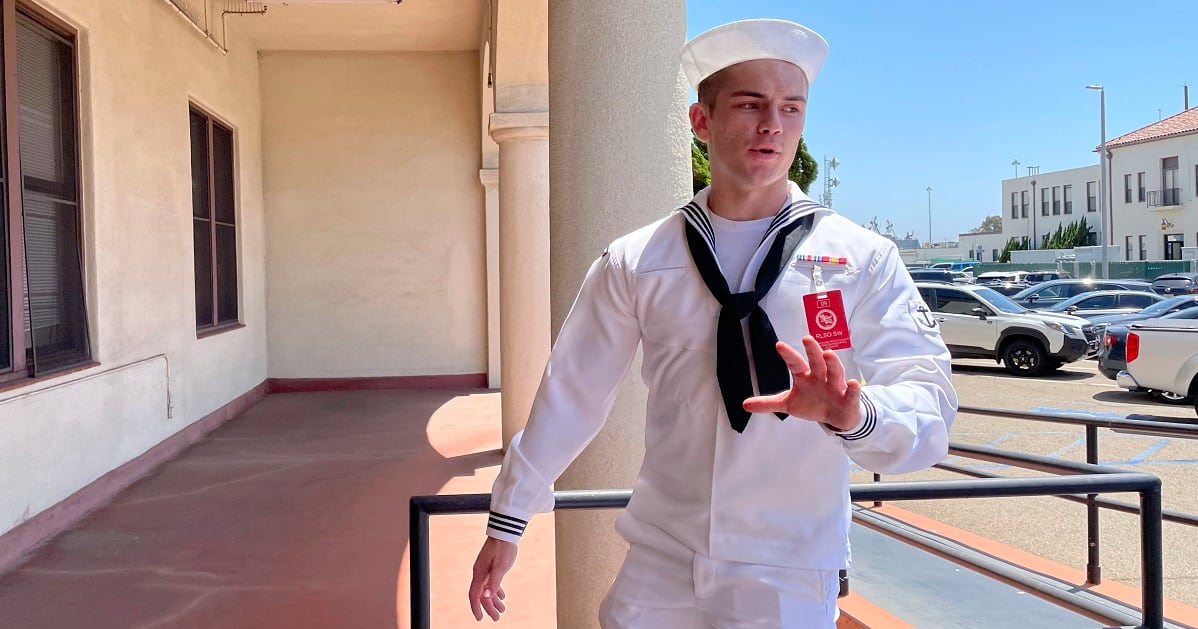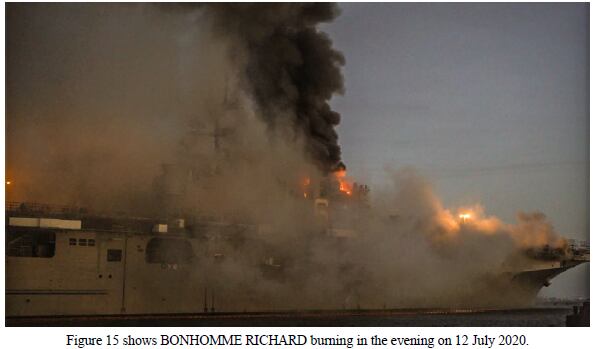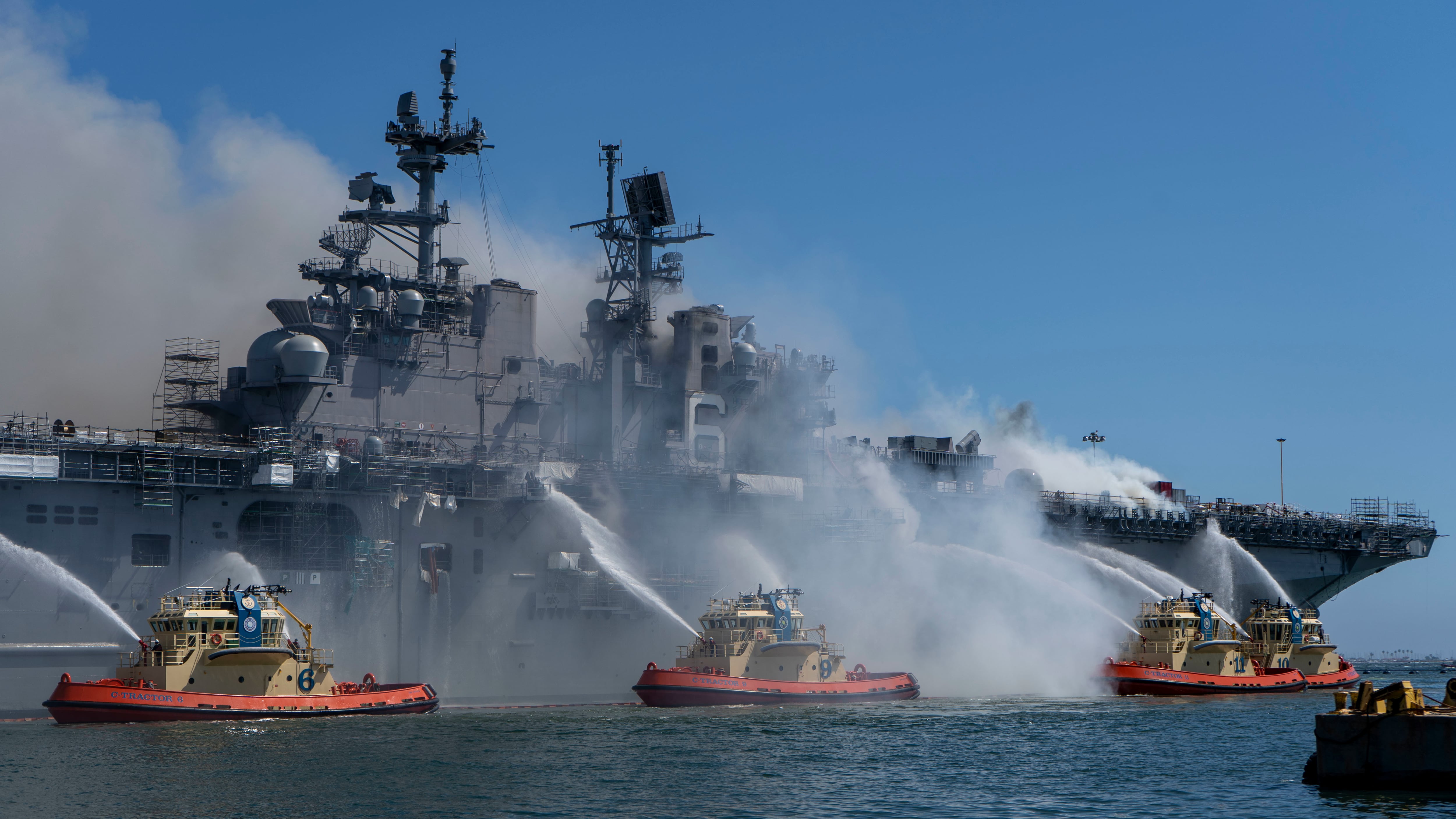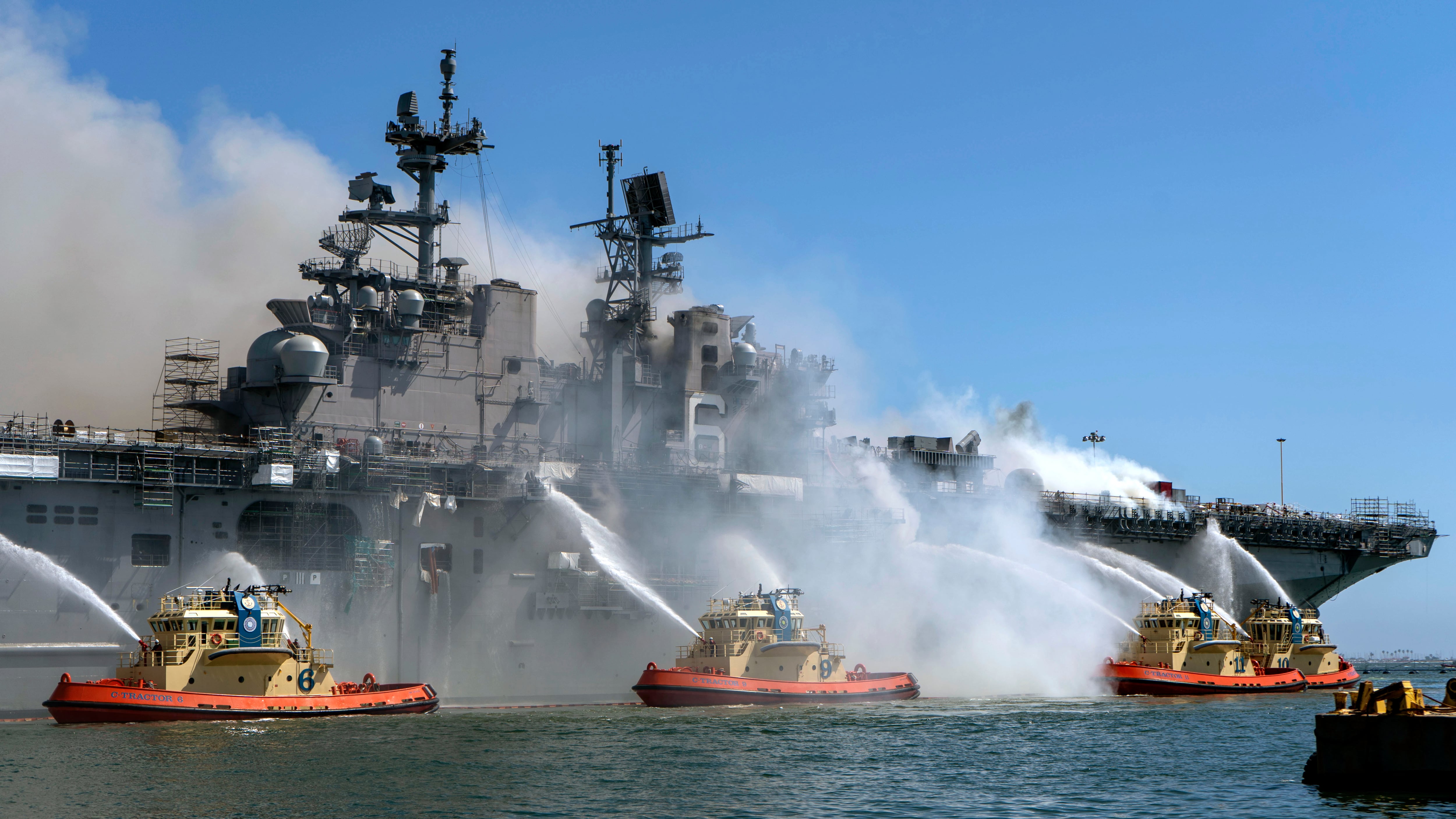SAN DIEGO — More than a half dozen former crew members of the USS Bonhomme Richard gave testimony on the first day of the arson trial of a young sailor Monday, describing a harrowing, chaotic scene as they confronted an inferno on the Navy warship with shoddy equipment.
With the thick black smoke quickly enveloping the ship, many said it was difficult to know what was going on. Now more than a year later, several of them who testified at the court martial of 21-year-old Ryan Sawyer Mays said that they are struggling to recall details from that July 12, 2020 morning, posing a challenge to the prosecution.

The prosecution has presented no physical evidence proving the 21-year-old sailor set the USS Bonhomme Richard on fire, something the defense has highlighted. Key witnesses also have changed their stories or their testimonies have contradicted each other, including on Monday.
According to prosecutors, Mays was an arrogant sailor angry about being assigned to deck duty after failing to become a Navy SEAL — and he made the Navy pay in a big way.
“Your honor, it was a mischievous act of defiance gone wrong,” Cmdr. Leah O’Brien told the judge during opening statements for the prosecution at Naval Base San Diego.
Mays’ military defense counsel, Lt. Tayler Haggerty, countered in her opening remarks that it’s the Navy who is wrong. Haggerty said investigators concluded Mays did it before the probe was complete and then ignored evidence and witness accounts that didn’t fit into that narrative so they could find a scapegoat for the loss of a billion-dollar ship that was mismanaged by senior officers.
Once investigators pinned the blame on Mays, who was known for being sarcastic and flippant, “nothing else mattered,” Haggerty said.
“Just because the government eliminates, ignores pieces of evidence, it doesn’t mean the court should,” she told the court. Haggerty told the judge by the end of the trial, which is supposed to last two weeks, “you will exonerate this sailor and find him not guilty of both charges.”
Mays is charged with aggravated arson and the willful hazarding of a vessel. He has denied any wrongdoing. He waived his right to a jury and has put his fate in the hands of the Navy judge, Capt. Derek Butler.
RELATED

The July 2020 blaze burned for nearly five days and sent an acrid smoke over San Diego, damaging the amphibious assault ship so badly that it had to be scuttled. It marked one of the worst noncombat warship disasters in recent memory.
About 115 sailors were on board, and nearly 60 were treated for heat exhaustion, smoke inhalation and minor injuries.
The Navy warship’s former fire marshal became emotional Monday when asked by the prosecution to recall what he did that day. He took a moment before responding.
“I’m still trying to work through this in therapy myself,” Petty Officer Jeffrey Garvin told the court at Naval Base San Diego. “I apologize.”
Later, he repeated, “I can’t remember a lot.”
Defense lawyers say investigators brushed aside the fact that lithium batteries were stored next to highly combustible material such as cardboard boxes, in violation of ship protocol.
The prosecution said one sailor told investigators he saw Mays go down to the ship’s lower vehicle storage area before the fire broke out there, while another sailor who escorted Mays to the brig said she overheard Mays say he did it. The defense said he was being sarcasstic after denying any wrongdoing during over 10 hours of questioning by investigators.
The defense said investigators, meanwhile, dismissed details that pointed to another sailor, who was later fired from the Navy.
Several former crewmembers testified Monday that the lower vehicle storage area was filled with bottles, tools, generators, tractors and other equipment while the ship was undergoing a two-year, $250 million upgrade pier-side in San Diego.
RELATED

Navy leaders disciplined more than 20 senior officers and sailors in connection with what it described as widespread leadership failures that contributed to the disaster. The Navy spread blame across a wide range of ranks and responsibilities and directly faulted the ship’s three top officers.
While investigators said Mays set the fire, a Navy report last year concluded that the inferno was preventable and unacceptable, and that there were lapses in training, coordination, communications, fire preparedness, equipment maintenance and overall command and control.
The failure to extinguish or contain the fire led to temperatures exceeding 1,200 degrees Fahrenheit in some areas, melting sections of the ship into molten metal that flowed into other parts of the ship.
Retired Navy Capt. Lawrence B. Brennan, an adjunct professor at Admiralty and International Maritime Law Fordham Law School, said the prosecution has its work cut out for it.
“There are questions about identification of the people in the vicinity of the fire and possible causes other than arson,” he said in an email to The Associated Press. “Moreover, the conflagration and firefighting efforts damaged, if not destroyed, the crime scene and crucial evidence.”




